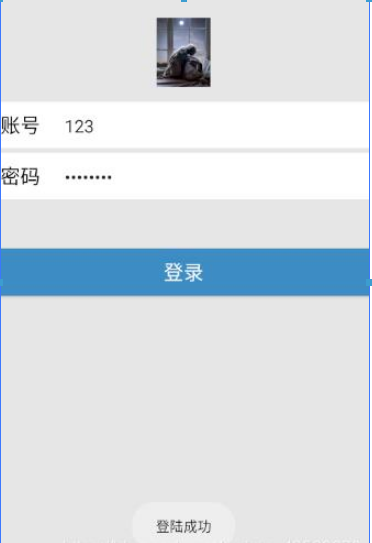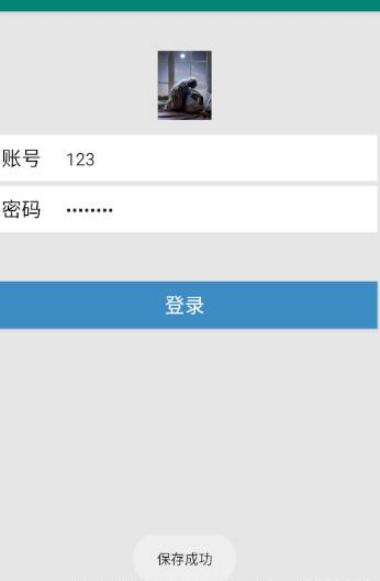您好,登錄后才能下訂單哦!
您好,登錄后才能下訂單哦!
這篇文章主要介紹“Android開發文件存儲的方法是什么”,在日常操作中,相信很多人在Android開發文件存儲的方法是什么問題上存在疑惑,小編查閱了各式資料,整理出簡單好用的操作方法,希望對大家解答”Android開發文件存儲的方法是什么”的疑惑有所幫助!接下來,請跟著小編一起來學習吧!
Android的文件存儲,有I/O流的方式存儲,與java一樣,還有一種Android自己的SharePreferences存儲方法。
下面看一個例子:
用I/O流的方式存儲方法和SharePreferences存儲方法,存放QQ賬號和密碼,再次進入頁面時,把存儲在文件中的賬號密碼顯示在上面。
activity_main.xml
<?xml version="1.0" encoding="utf-8"?> <RelativeLayout xmlns:android="http://schemas.android.com/apk/res/android" android:layout_width="match_parent" android:layout_height="match_parent" android:background="#E6E6E6" android:orientation="vertical"> <ImageView android:id="@+id/iv" android:layout_width="70dp" android:layout_height="70dp" android:layout_centerHorizontal="true" android:layout_marginTop="40dp" android:src="@drawable/head" /> <LinearLayout android:id="@+id/ll_number" android:layout_width="match_parent" android:layout_height="wrap_content" android:layout_below="@id/iv" android:layout_centerVertical="true" android:layout_marginBottom="5dp" android:layout_marginLeft="10dp" android:layout_marginRight="10dp" android:layout_marginTop="15dp" android:background="#ffffff"> <TextView android:id="@+id/tv_number" android:layout_width="wrap_content" android:layout_height="wrap_content" android:padding="10dp" android:text="賬號" android:textColor="#000" android:textSize="20sp"/> <EditText android:id="@+id/et_number" android:layout_width="match_parent" android:layout_height="wrap_content" android:layout_marginLeft="5dp" android:background="@null" android:padding="10dp"/> </LinearLayout> <LinearLayout android:id="@+id/ll_password" android:layout_width="match_parent" android:layout_height="wrap_content" android:layout_below="@id/ll_number" android:layout_centerVertical="true" android:layout_marginLeft="10dp" android:layout_marginRight="10dp" android:background="#ffffff"> <TextView android:id="@+id/tv_password" android:layout_width="wrap_content" android:layout_height="wrap_content" android:padding="10dp" android:text="密碼" android:textColor="#000" android:textSize="20sp"/> <EditText android:id="@+id/et_password" android:layout_width="match_parent" android:layout_height="wrap_content" android:layout_marginLeft="5dp" android:background="@null" android:inputType="textPassword" android:padding="10dp"/> </LinearLayout> <Button android:id="@+id/btn_login" android:layout_width="match_parent" android:layout_height="wrap_content" android:layout_below="@id/ll_password" android:layout_marginLeft="10dp" android:layout_marginRight="10dp" android:layout_marginTop="50dp" android:background="#3c8dc4" android:text="登錄" android:textColor="#ffffff" android:textSize="20sp" /> </RelativeLayout>
MainActivity.java
package com.example.saveqq;
import androidx.appcompat.app.AppCompatActivity;
import android.os.Bundle;
import android.text.TextUtils;
import android.view.View;
import android.widget.Button;
import android.widget.EditText;
import android.widget.Toast;
import java.util.Map;
public class MainActivity extends AppCompatActivity implements View.OnClickListener {
private EditText user;
private EditText password;
private Button button;
@Override
protected void onCreate(Bundle savedInstanceState) {
super.onCreate(savedInstanceState);
setContentView(R.layout.activity_main);
//1.初始化view
initView();
//2.若用戶保存了信息,進行數據回寫
//I/O流方法
Map<String,String> userInfo = FileSaveQQ.getUserInfo(this);
//SharedPreferences的方法
/* Map<String,String> userInfo = SpSaveQQ.getUserInfo(this);*/
if ((userInfo!=null)){
user.setText(userInfo.get("user"));
password.setText(userInfo.get("password"));
}
}
private void initView() {
//控件的初始化
user = (EditText)findViewById(R.id.et_number);
password = (EditText)findViewById(R.id.et_password);
button = (Button) findViewById(R.id.btn_login);
//2.設置按鈕點擊事件
button.setOnClickListener(this);
}
@Override
public void onClick(View v) {
//1.點擊獲取賬號密碼
String s_user = user.getText().toString().trim();
String s_password = password.getText().toString().trim();
//2.檢查用戶名和密碼是否為空
if (TextUtils.isEmpty(s_user)){
Toast.makeText(this,"請輸入QQ賬號",Toast.LENGTH_LONG).show();
return;
}
if (TextUtils.isEmpty(s_password)){
Toast.makeText(this,"請輸入QQ密碼",Toast.LENGTH_LONG).show();
return;
}
Toast.makeText(this,"登陸成功",Toast.LENGTH_LONG).show();
//3.保存用戶信息
//I/O流的方法
boolean isSaveSuccess = FileSaveQQ.saveUserInfo(this,s_user,s_password);
//用SharedPreferences的方法
/* boolean isSaveSuccess = SpSaveQQ.saveUserInfo(this,s_user,s_password);*/
if (isSaveSuccess){
Toast.makeText(this,"保存成功",Toast.LENGTH_LONG).show();
}else{
Toast.makeText(this,"保存失敗",Toast.LENGTH_LONG).show();
}
}
}用i/o流方法
FileSaveQQ.java
package com.example.saveqq;
import android.content.Context;
import java.io.FileInputStream;
import java.io.FileNotFoundException;
import java.io.FileOutputStream;
import java.io.IOException;
import java.util.HashMap;
import java.util.Map;
public class FileSaveQQ {
//保存QQ賬號和密碼到data.txt
public static boolean saveUserInfo(Context context,String user,String password){
try {
//1.通過上下文獲取文件輸出流
FileOutputStream fos = context.openFileOutput("data.txt",context.MODE_APPEND);
//2.把數據寫到文件中
fos.write((user+":"+password).getBytes());
fos.close();
return true;
} catch (IOException e) {
e.printStackTrace();
return false;
}
}
public static Map<String,String> getUserInfo(Context context){
String content = "";
try {
FileInputStream fis = context.openFileInput("data,txt");
byte[] buffer = new byte[fis.available()];
fis.read(buffer);
Map<String,String> userMap = new HashMap<String, String>();
content = new String(buffer);
String[] infos = content.split(":");
userMap.put("user",infos[0]);
userMap.put("password",infos[1]);
fis.close();
return userMap;
} catch (IOException e ) {
return null;
}
}
}用SharedPreferences的方法
SpSaveQQ.java
package com.example.saveqq;
import android.annotation.SuppressLint;
import android.content.Context;
import android.content.SharedPreferences;
import java.util.HashMap;
import java.util.Map;
//保存QQ賬號和密碼到data.xml中
public class SpSaveQQ {
public static boolean saveUserInfo(Context context,String username,String password){
SharedPreferences sp = context.getSharedPreferences("data",context.MODE_PRIVATE);
SharedPreferences.Editor editor = sp.edit();
editor.putString("username",username);
editor.putString("password",password);
editor.commit();
return true;
}
//從data.xml文件中獲取存儲的QQ賬號和密碼
public static Map<String,String> getUserInfo(Context context){
SharedPreferences sp = context.getSharedPreferences("data",context.MODE_PRIVATE);
String username = sp.getString("username","");
String password = sp.getString("password","");
Map<String,String> userMap = new HashMap<>();
userMap.put("username",username);
userMap.put("password",password);
return userMap;
}
}運行截圖:


重新進入頁面:

到此,關于“Android開發文件存儲的方法是什么”的學習就結束了,希望能夠解決大家的疑惑。理論與實踐的搭配能更好的幫助大家學習,快去試試吧!若想繼續學習更多相關知識,請繼續關注億速云網站,小編會繼續努力為大家帶來更多實用的文章!
免責聲明:本站發布的內容(圖片、視頻和文字)以原創、轉載和分享為主,文章觀點不代表本網站立場,如果涉及侵權請聯系站長郵箱:is@yisu.com進行舉報,并提供相關證據,一經查實,將立刻刪除涉嫌侵權內容。